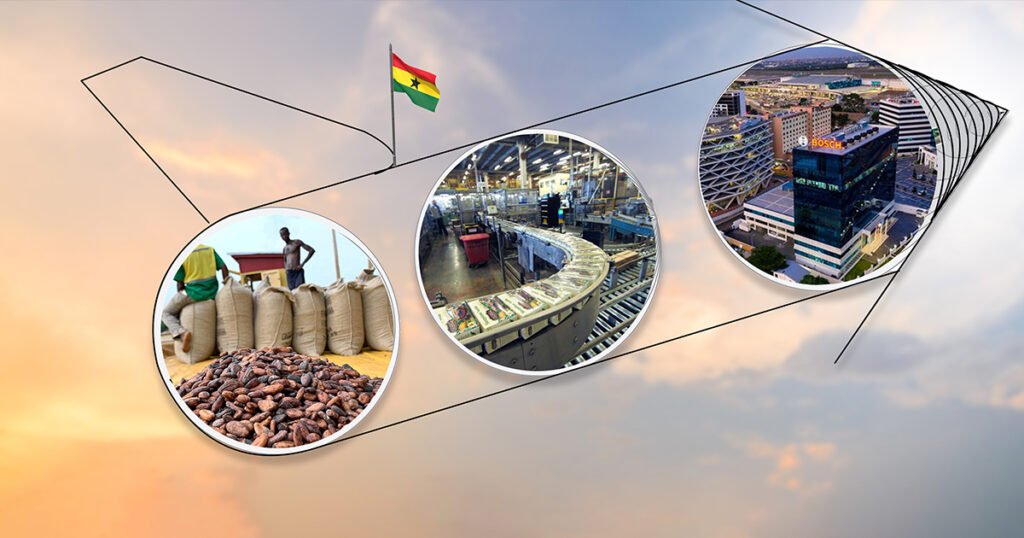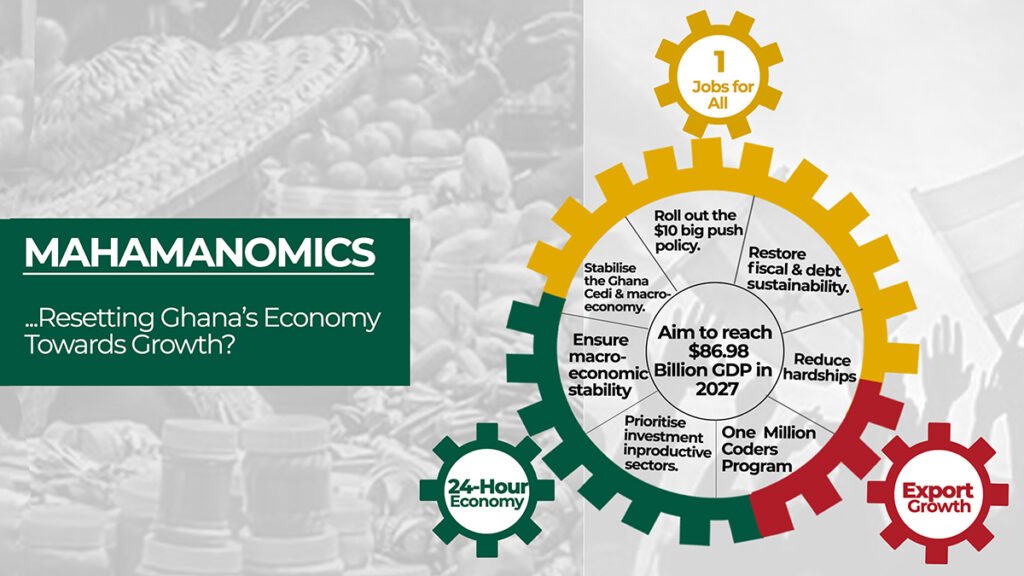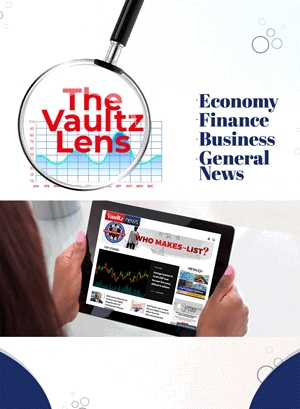Ghana’s economic performance during 2016 was mixed. After making solid progress on fiscal consolidation in bringing the fiscal deficit down from 10.2% of GDP in 2014 to 6.3% in 2015, the target to narrow it further to 5.3% of GDP in 2016 was missed by a wide margin with the deficit reaching 9% of GDP. GDP growth at 3.6% in 2016, however, was slightly higher than the forecast of 3.3%, and for the first quarter of 2017, it grew by 6.6%. Fiscal performance in the first half of 2017 was mixed as a big shortfall in revenue forced a sharp cut in expenditure with the government seeking to contain the fiscal deficit within the target. The budget deficit was held at 2.7% of GDP as against the target of 3.5% of GDP.
Macroeconomic stability was observed during the first half of 2017. After remaining stubbornly above 17%, inflation dropped to 15.4% in December 2016. Since then inflation has dropped steadily, touching 12.1% in June 2017 and closer to the Bank of Ghana’s target range of 6%–10%. The drop in the inflation rate was due to the relative stability in the cedi exchange rate and the tightness of fiscal and monetary policies. During the first half of 2017, the cedi exchange rate to the U.S dollar depreciated by 3.7%, after coming down from a peak of 8.8% depreciation through early March, and is expected to remain low in the coming months. The stability of the cedi was supported by the substantial inflow of foreign exchange from the bond issued by the government in April this year. Cumulatively, the monetary policy rate was slashed by 500 basis points since November 2016 to reach 21% in May this year in response to the continuing decline in inflation. Consequently, interest rates, generally, trended downwards during the first half of this year, with the 91-day Treasury bill rate, for instance, dropping from 16.4% at end 2016 to 12.1% at end June 2017.
In spite of weak commodity prices, Ghana’s external balance improved in 2016, reflecting increased exports and a fall in imports. The current account deficit narrowed to 6.4% of GDP in 2016 from 7.6% of GDP in 2015. Gross foreign reserves increased from $4.9 billion, equivalent to 2.8 months of imports at the end of 2016 to US$5.9 billion, equivalent to 3.4 months of import cover in June 2017.
NEAR TERM OUTLOOK
Ghana’s near term prospects are good, in the absence of a further fiscal slippage. The country’s credit strength includes a strong growth outlook supported by the new oil fields that have come on stream. Economic growth is expected to accelerate in 2017, spurred by improvements in the oil sector. Oil production is expected to increase as the Jubilee field and the TEN Field reaches its full capacity. The non-oil growth sectors, including agriculture and industry, are also expected to remain robust.
For the first half of the year, the macro- indicators pointed to the right direction. The exchange rate stabilized, inflationary pressures eased and interest rates trended downwards. The easing of the power crisis also went a long way to support economic growth.
Surveys conducted by the central bank also indicate positive consumer and business sentiments in the direction of the economy. While consumer sentiments were largely driven by improvement in household incomes and purchases of durables, businesses were optimistic about their expectations on sales and profit, which will go a long way to improve private sector investments. The expected rebound in commodity prices will support exports growth, which would help stabilize the exchange rate and create employment going forward. The IMF has also approved a one-year extension of the ECF program after a successful review of the program. This means that the Fund has approved the government’s policies to restore macroeconomic stability and debt sustainability to foster a return to high growth and job creation. There is also a window of opportunity to harness the potential of the country’s cities as engines of growth. All these indicators clearly show the bright prospects of the country and the fact that the economy is on the path of recovery and progressively investor confidence is being restored.
 CHALLENGES AND RISKS
CHALLENGES AND RISKS
Despite the bright future prospects, Ghana’s near- term challenges are substantial and downside risks remain high, reflecting in part the need for the government to build credibility in prudent fiscal management. Thus far, revenue shortfalls in government budget have been marched by severe expenditure retrenchment. The fiscal targets are, therefore, likely to be missed as the budget contains significant tax cuts with serious consequences for domestic resource mobilization. Ghana has historically underperformed its budgeted revenue projections, and 2017 may not be an exception. Lack of transparency and accountability within the line ministries, departments and agencies has persistently led to substantial off-budget spending and the accumulation of arrears. Serious implementation of the provisions of the Public Finance Management Act, 2016, would help control expenditure and keep spending focused on the priorities outlined in the 2017 budget.
Investors will remain concerned about the country’s high level of debt and a wider-than- expected fiscal deficit, although tight monetary policy should help prevent a rapid sell-off in the currency. Based on Moody’s fiscal forecast and the assumption of a modest depreciation in the cedi exchange rate, Ghana’s public debt will peak at 73% of GDP this year, before beginning to decline next year. The challenge here is the debt ratio exceeding 70% of GDP and very low debt affordability metrics over the next two years. Ghana’s debt affordability is very low due to its high domestic borrowing costs. The large share of foreign currency debt at non-concessional terms exposes the country’s debt dynamics to foreign exchange shocks and to a tightening of external liquidity conditions. There is thus a potential risk of future capital reversal should the exchange rate deteriorate and bring serious pressure on the country’s foreign reserves.
The sluggish decline in commercial banks’ lending rates since the monetary easing cycle commenced in November 2016 also poses serious challenge to economic growth. The stickiness in the commercial banks’ lending rates, a result of diverse factors, including the large non-performing loans, high operational cost, and high cost of funds locked in longer term investments (including significant concentration risk in the energy sector), constrains economic growth. A faster decline in lending rates in the near term is therefore critical.
Ghana is also likely to face continued high domestic and external financing costs as its debt expands and global interest rates rises. This calls for stronger efforts to increase domestic resource mobilization and prioritization of government expenditure in favor of capital spending, payment of genuine arrears, and increased social spending. Uncertainties in the global environment, including whether the nascent recovery in commodity prices will be sustained, also can negatively affect foreign direct investment flows to Ghana.
The government also faces a number of other major challenges: high youth unemployment; ongoing delays in the resolution of debt incurred by energy state-owned enterprises; and the high cost of electricity and need to better match demand and supply. The resolution of these challenges to spur economic growth and create jobs lies in the effective execution of the policies and programs of the government, such as the one district one factory, planting for food and jobs, one village one dam, infrastructure for poverty eradication, which constitute the government’s agenda for agricultural transformation, rapid industrialization, economic growth and job creation.
In conclusion, there is no doubt that the future of the Ghanaian economy is bright. The government initiatives aimed at sowing the seeds for growth and jobs are bold and laudable and need to be supported. The success, however, will depend on a number of factors, including proper designing of the programs and sequencing of implementation, honest and strong commitment to the success of the programs by the politicians, and the ability of the government to carry along all Ghanaians towards this common cause



 CHALLENGES AND RISKS
CHALLENGES AND RISKS





